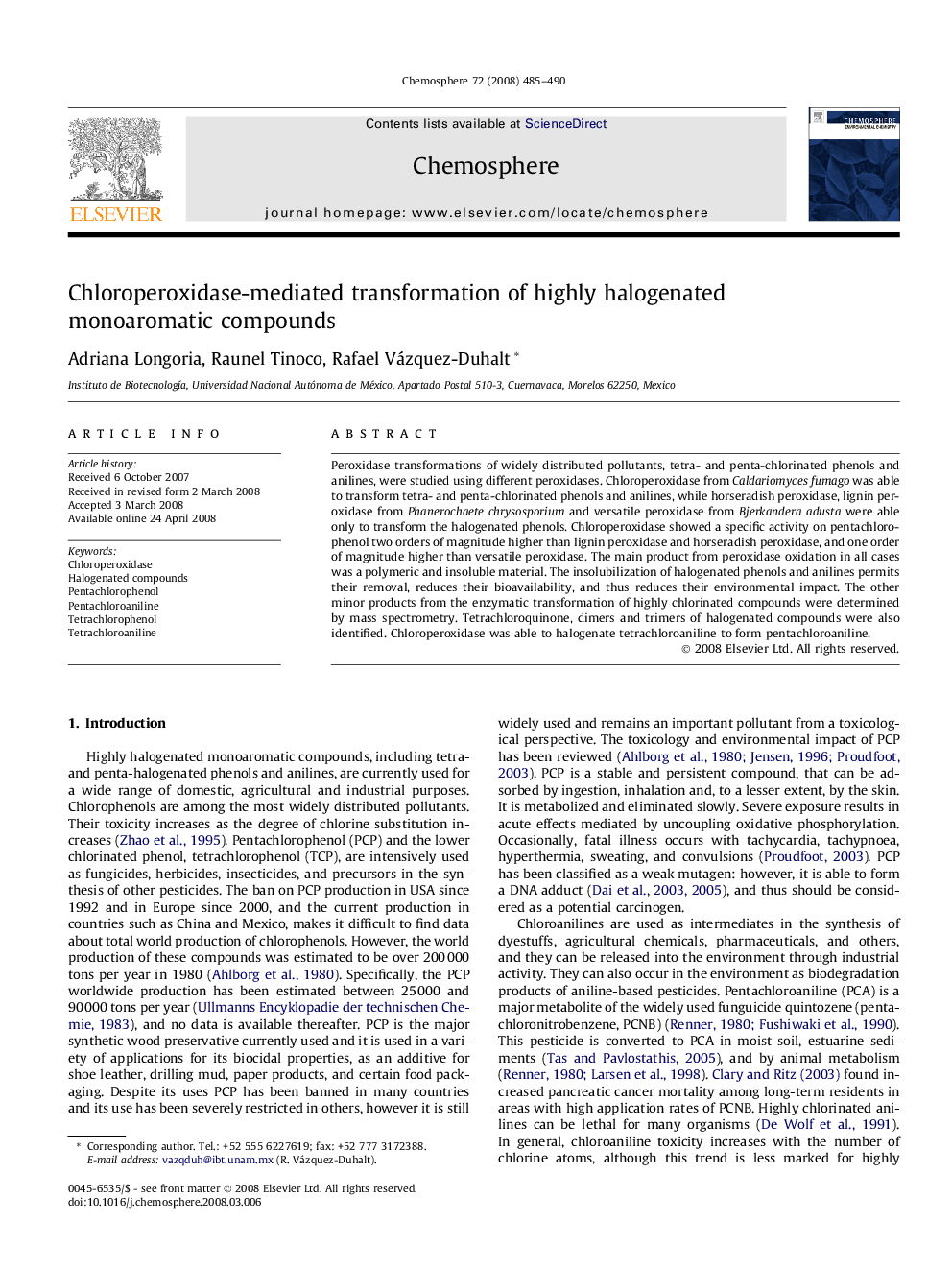| Article ID | Journal | Published Year | Pages | File Type |
|---|---|---|---|---|
| 4414240 | Chemosphere | 2008 | 6 Pages |
Peroxidase transformations of widely distributed pollutants, tetra- and penta-chlorinated phenols and anilines, were studied using different peroxidases. Chloroperoxidase from Caldariomyces fumago was able to transform tetra- and penta-chlorinated phenols and anilines, while horseradish peroxidase, lignin peroxidase from Phanerochaete chrysosporium and versatile peroxidase from Bjerkandera adusta were able only to transform the halogenated phenols. Chloroperoxidase showed a specific activity on pentachlorophenol two orders of magnitude higher than lignin peroxidase and horseradish peroxidase, and one order of magnitude higher than versatile peroxidase. The main product from peroxidase oxidation in all cases was a polymeric and insoluble material. The insolubilization of halogenated phenols and anilines permits their removal, reduces their bioavailability, and thus reduces their environmental impact. The other minor products from the enzymatic transformation of highly chlorinated compounds were determined by mass spectrometry. Tetrachloroquinone, dimers and trimers of halogenated compounds were also identified. Chloroperoxidase was able to halogenate tetrachloroaniline to form pentachloroaniline.
